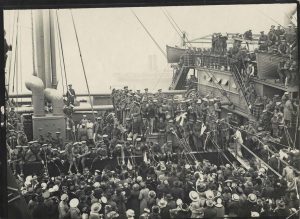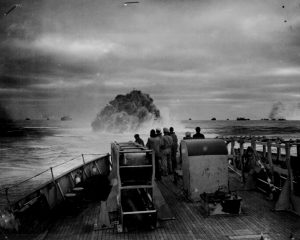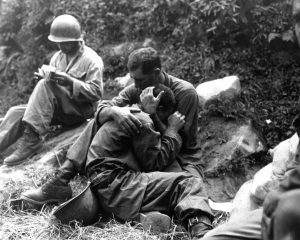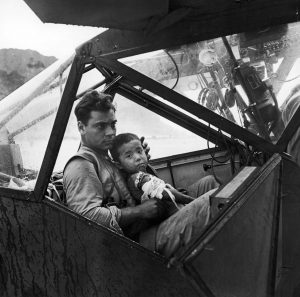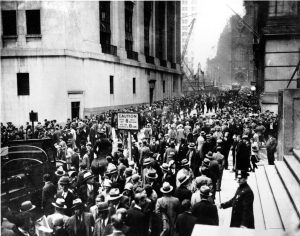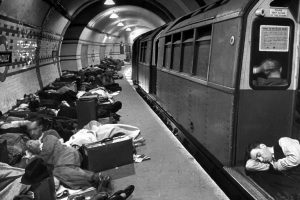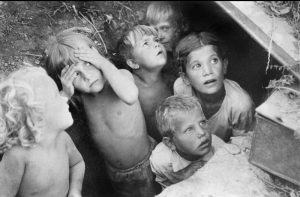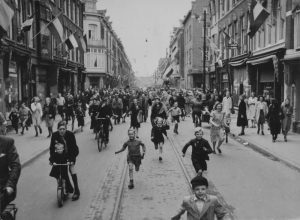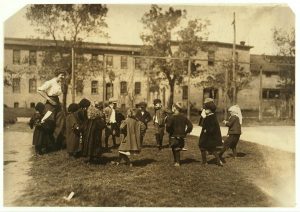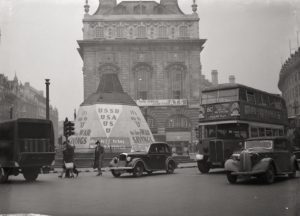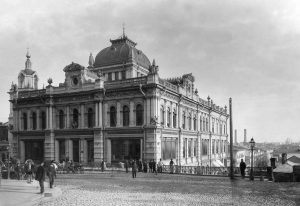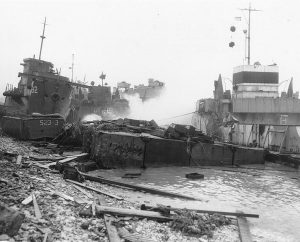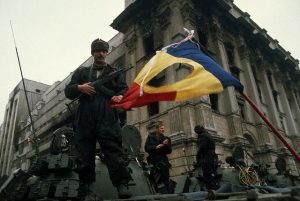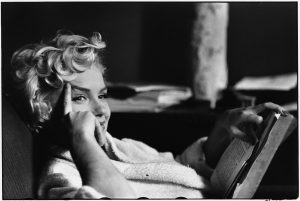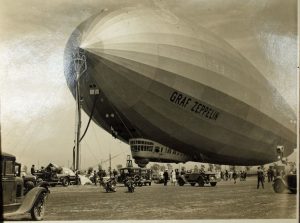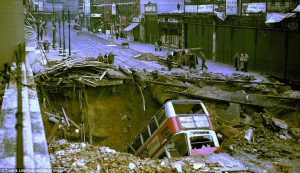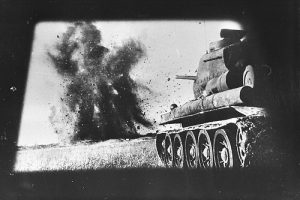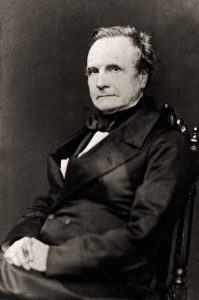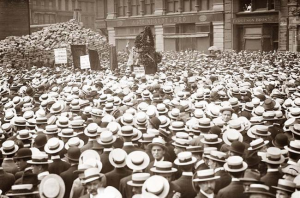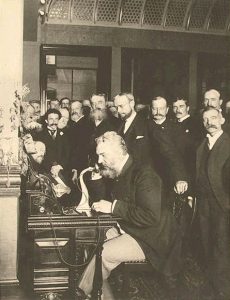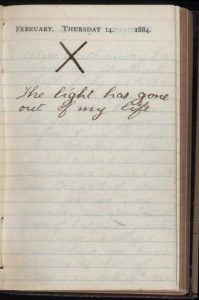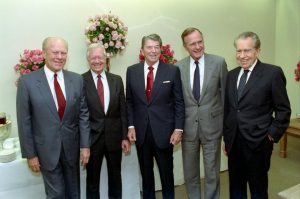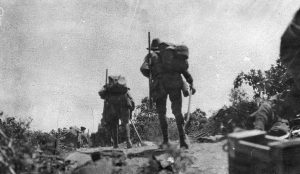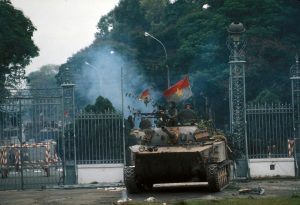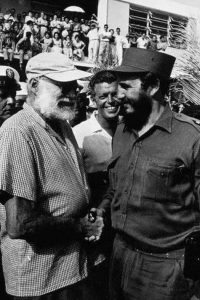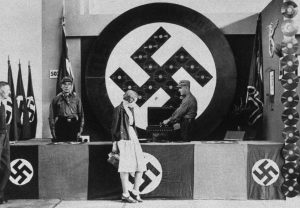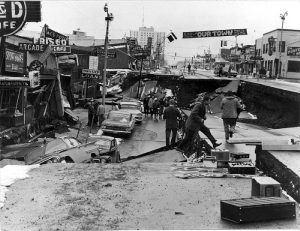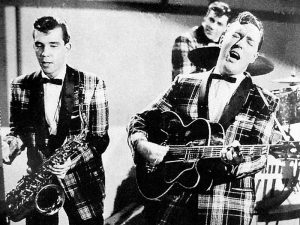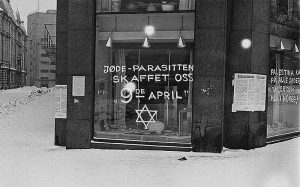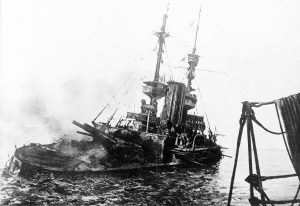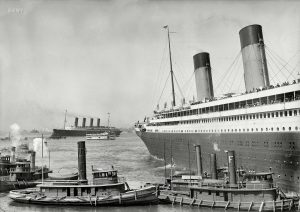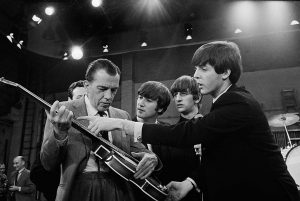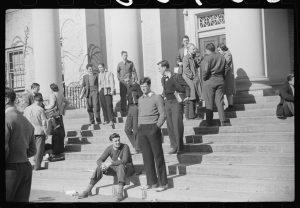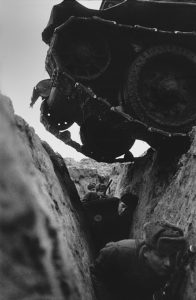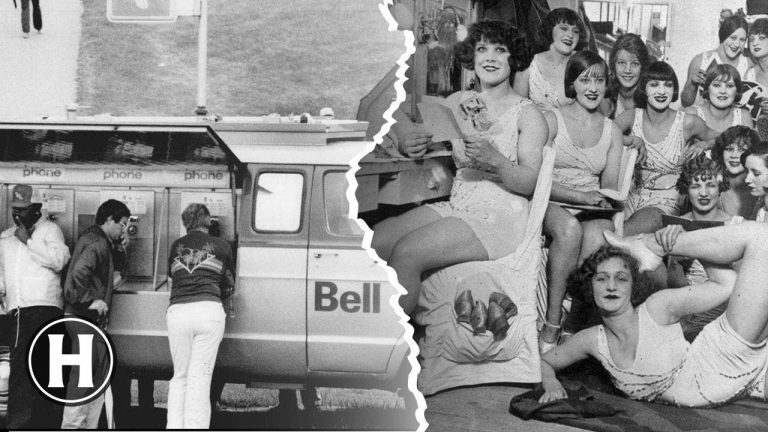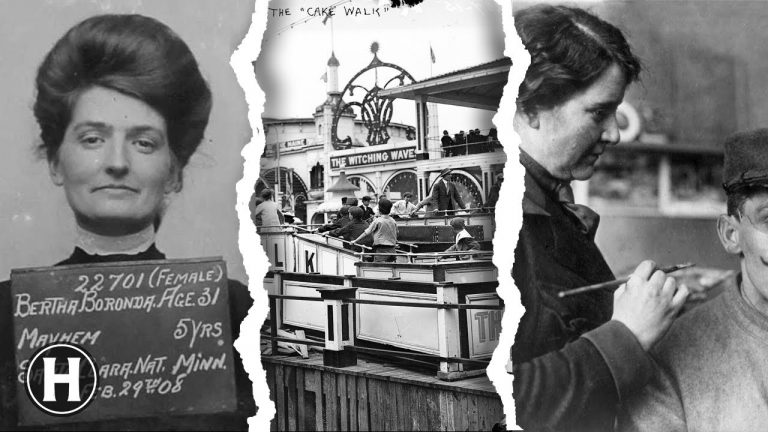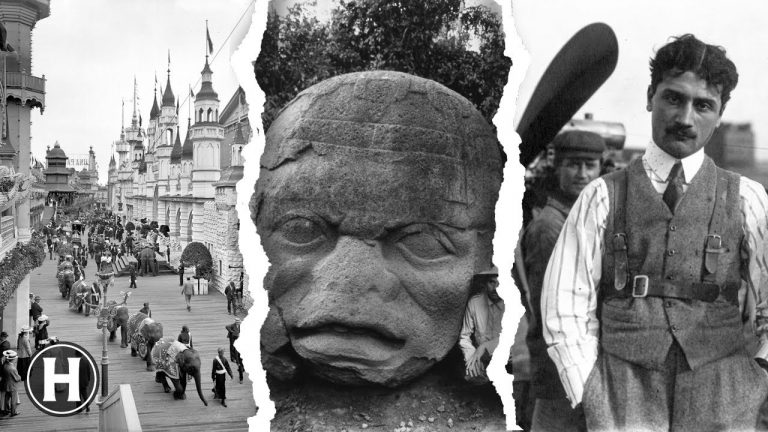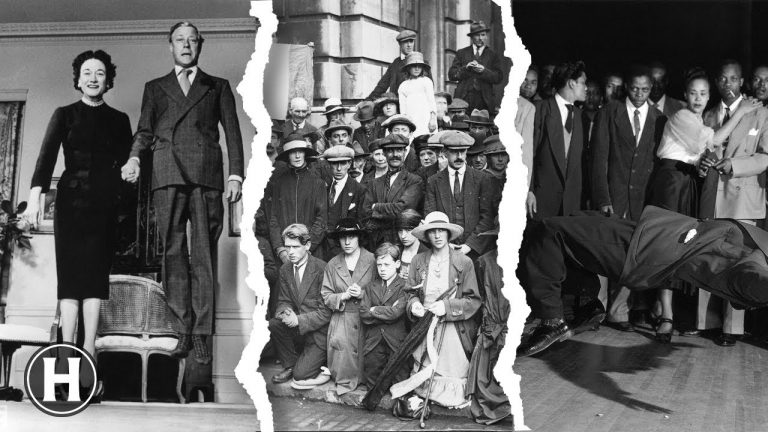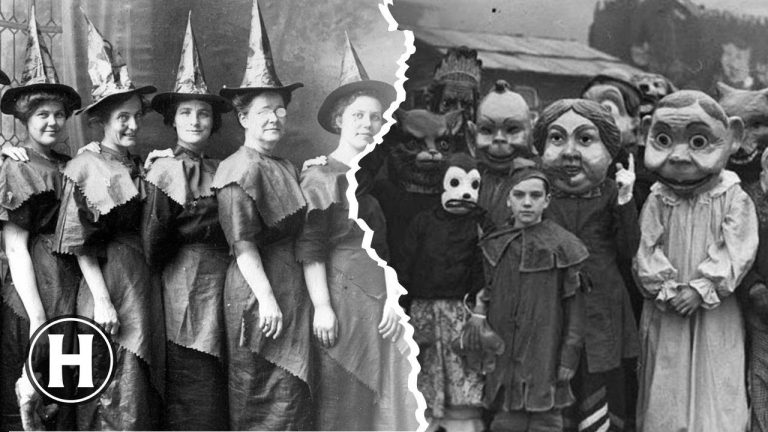Journey through poignant moments in time as we explore iconic images from history. These photos encapsulate pivotal events, from the first Australian troopship departure for WWI to the significant Fall of Saigon and even cultural milestones like the first rock hit on TV.
Farewell ASCANIUS (1916)
The Ascanius troopship was a British Royal Mail Ship converted to a troopship during WWI. On May 27, 1916, it left Melbourne, Australia, carrying soldiers to Europe. Despite journey risks, it successfully transported thousands of soldiers during the war.
Sinking of U-175 (1943)
The U-175, a German submarine during the WWII, was sunk by the USCGC Spencer, a coast guard cutter, on April 17, 1943. Remarkably it’s the first submarine sinking carried out by U.S. Coast Guard during the war. This feat eventually helped the allies win the Atlantic war.
Comfort in Grief (1950)
This poignant scene from the Battle of Pusan Perimeter, a key early conflict in the Korean War, encapsulates the deep bonds between soldiers and the grave realities of warfront. The casualty tags imply heavy losses, amplifying the gravity of human suffering.
American Pilot and Wounded Boy (1944)
Despite the horrors of war, humanity often shines through. In 1944, amidst the fierce Pacific battle on Saipan island, an American pilot held a wounded Japanese boy, embodying compassion and kindness on the battlefield as they awaited medical help.
Emir of Bukhara (1910)
Emir Alim Khan, ruler of Bukhara from 1910-1920, was the last emir of the Manghud dynasty. Notorious for his decadence and brutality, he was overthrown during the Russian revolution, marking the end of Bukhara’s time as an independent emirate.
Panic on Black Thursday (1929)
On “Black Thursday” Oct 24, 1929, after a week of declines, panic selling set in & 12.9 million shares were traded on the NY Stock Exchange. This marked the start of the Great Depression, the worst and longest economic downturn in Western industrialized history.
Londoners in Tube (1940)
During World War II, Londoners took refuge in underground tube stations, effectively turning them into air-raid shelters. At the height of the Blitz, around 177,000 Londoners were sleeping in the Tube network each night, creating a unique subterranean community.
Kids in Trench, Stalingrad (1942)
During the Battle of Stalingrad, children didn’t just hide; they played crucial roles. Many were part of the Young Pioneers, a Soviet scouting group, who delivered communications, aided wounded soldiers, and even helped locate enemy positions.
“Amsterdam Liberated” (1945)
Amsterdam was liberated from Nazi rule on May 5, 1945, marking the end of WWII in the Netherlands. Liberation Day is celebrated annually with music festivals and remembrance activities throughout the city, honoring those who suffered during the occupation.
Kindergarten Kids at Cotton Mill (1913)
The Dallas Cotton Mill, operating in 1913, provided a kindergarten for their workers’ children, reflecting an early example of employer-supported childcare. This showed social responsibility ahead of its time.
War Savings in Piccadilly (1941)
During WWII, London’s Eros statue, a notable Piccadilly Circus landmark, was not just sand-bagged for protection, but also used as a billboard for war savings posters. This reflected the wartime morale, promoting a shared unity and sacrifice for victory.
Society of St. Nicholas (1900s)
The “Society of St. Nicholas factory Vikulov Morozov sons” building was part of Russia’s industrial era. It was a textiles empire owned by the prosperous Morozov family. Its eclectic architectural design reflects both western influences and traditional Russian motifs.
Beaching at Omaha (21 June 1944)
On 21 June 1944, a significant storm left several landing crafts beached on Omaha Beach, which was a crucial part of the Normandy invasion. The weather initially delayed the invasion, showcasing the unpredictability that weather posed in warfare.
Romanian Revolt (1989)
In 1989, Romanian people sparked a revolution that led to the overthrow of Nicolae Ceaușescu’s dictatorship, ending 42 years of Communist rule. Remarkably, it’s the only violent overthrow of a communist government to occur due to a popular uprising.
Elliott Erwitt’s Marilyn (1956)
This iconic photograph of Marilyn Monroe, captured by Elliott Erwitt in New York, 1956, epitomizes her delicate balance of vulnerability and allure. Taken on the set of “The Seven Year Itch”, it captures Monroe’s timeless beauty and her magnetic screen presence.
Graf Zeppelin in LA (1929)
The LZ-127, known as Graf Zeppelin, was the largest airship at the time. Its visit to Los Angeles in 1929 was a part of a record-setting round-the-world flight, making the city a significant stop.
Balham Underground Disaster (14th Oct 1940)
This tragic event occurred during the Blitz of WWII. All the victims who died were actually sheltering inside the Balham Underground station, using it as an air-raid shelter. The bus driver, unable to see the gaping hole due to blackout conditions, plunged in.
Soviet T-34 Tank (1941-1945)
The Soviet T-34 tank, used in combat from 1941-1945, was a game changer in WWII. Its unique blend of firepower, mobility, protection, and ruggedness played a crucial role in countering German Panzers.
Charles Babbage (1860)
The first mechanical computer, known as the Difference Engine, was invented by Charles Babbage in 1822. This fascinating invention was intended to automate and speed up complicated calculations, a precursor to today’s sophisticated computers.
Alexander Berkman: Union Square (1914)
In 1914, infamous anarchist Alexander Berkman addressed a massive crowd at Union Square, NYC, deemed the ‘sea of white hats.’ He was a leading figure in American anarchism and was known for his passionate speeches towards labor rights and radical change.
Bell’s 1st NY-Chicago Call (1892)
The first telephone call from New York to Chicago in 1892 by Alexander Graham Bell marked a significant milestone, demonstrating the technical feasibility of long-distance telecommunication, predating the era of modern internet connectivity by over a century.
Teddy’s Tragedy (1884)
On February 14, 1884, Teddy Roosevelt’s diary entry was brief but poignant after his wife and mother died on the same day. He simply drew a large ‘X’ and wrote “The light has gone out of my life.” The profundity of this sentence reflects his profound grief.
Ronald Reagan Lib. Dedication (Nov. 4, 1991)
The Ronald Reagan Presidential Library’s dedication was a historic event as it was the first time in U.S. history that five U.S. presidents gathered in the same location – Richard Nixon, Gerald Ford, Jimmy Carter, Ronald Reagan, and George H.W. Bush.
Australian Troops in Action (25 April 1915)
On April 25, 1915, Australian troops took part in the famous Gallipoli campaign during WWI, marking the first major military action by Australia. This day is now commemorated as ANZAC Day, a national day of remembrance in Australia and New Zealand.
Saigon Falls (1975)
During the U.S evacuation of Saigon in April 1975, Operation Frequent Wind was initiated. It was possibly the largest helicopter evacuation in history, with approximately 7,000 people transported in just two days.
Ernest Hemingway Meets at Marlovento (1960)
Ernest Hemingway was not just a Nobel laureate but also an avid fisherman. He met the then Cuban leader, Fidel Castro, at a fishing tournament in 1960. Castro won by catching a marlin weighing 286 pounds, besting Hemingway’s record.
Nazi Gramophone Promo (1932)
The 1932 Berlin IFA, exhibiting a Nazi gramophone plate industry booth, showcases the regime’s early efforts to utilize modern technology, like gramophones, for propaganda dissemination, highlighting their significant understanding of mass media influence.
Anchorage Quake Damage (May 27, 1964)
The earthquake on May 27, 1964 known as the “Great Alaskan Earthquake” is the most powerful recorded in US history, registering 9.2 magnitude. It caused extensive damage with the ground sinking 8 feet, resulting in Fourth Avenue in Anchorage becoming a chasm.
“Rock Around the Clock” (ca. 1955)
This 1955 performance of “Rock Around the Clock” by Bill Haley & His Comets is momentous. It’s considered America’s first introduction to Rock n Roll on mainstream television, making it a pivotal moment in the history of modern music.
“Anti-Jewish Graffiti, Oslo (1941)”
Despite being in Nazi-controlled territory during 1941, the Norwegian populace largely rejected such anti-Semitic actions. Many Norwegians engaged in significant resistance against the occupation, including helping Jews escape to neutral Sweden.
Sinking of HMS Irresistible (18 March 1915)
The HMS Irresistible was abandoned due to heavy damage from Turkish mines during the Battle of Gallipoli. Interestingly, it was one of the first British warships to be sunk in WW1. Yet, all but three of her crew survived, highlighting the efficiency of rescue efforts.
White Star liner Olympic Docks (1911)
The White Star liner Olympic, sister ship to the ill-fated Titanic, was the first of the Olympic-class ocean liners. When it docked in NYC in 1911, it was the largest liner in the world at that time.
Beatles Teach Ed Sullivan (1964)
On February 9th, 1964, The Beatles made their US television debut on “The Ed Sullivan Show”, marking the start of ‘Beatlemania’. Their performance was watched by 73 million viewers, roughly one-third of the U.S. population at the time.
UNC Chapel Hill Students (1939)
In 1939, University of North Carolina at Chapel Hill students were introduced to the “Sound and Light” program, a precursor to multimedia learning, which combined radio broadcasts with synchronized slide projectors for enhanced educational experiences.

